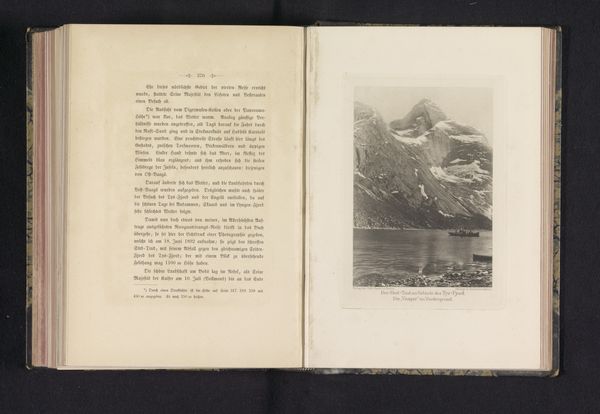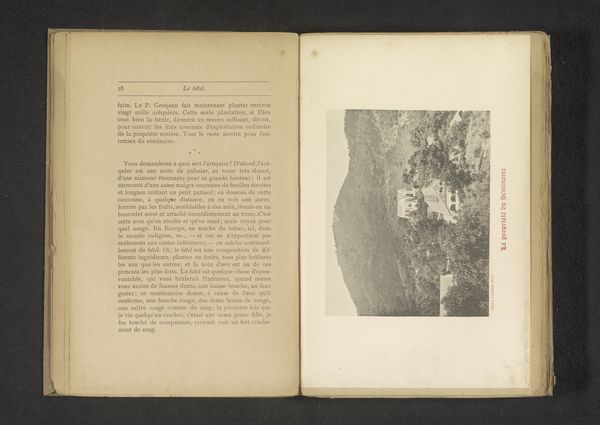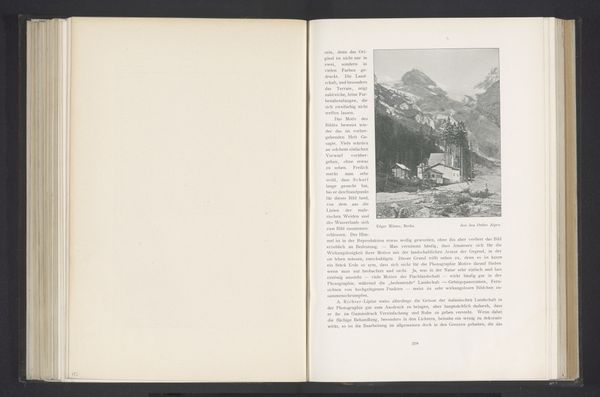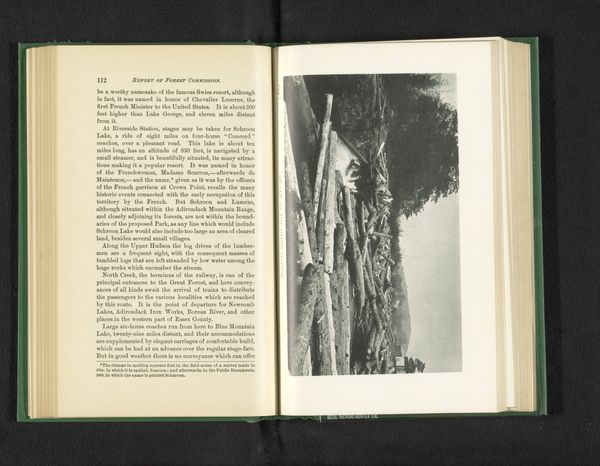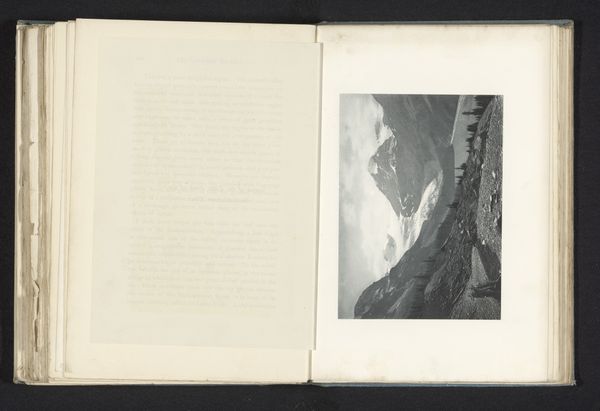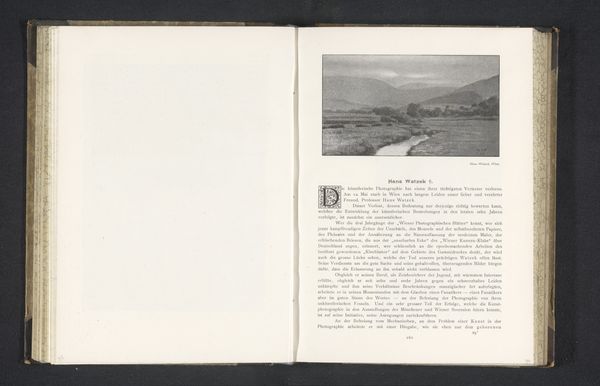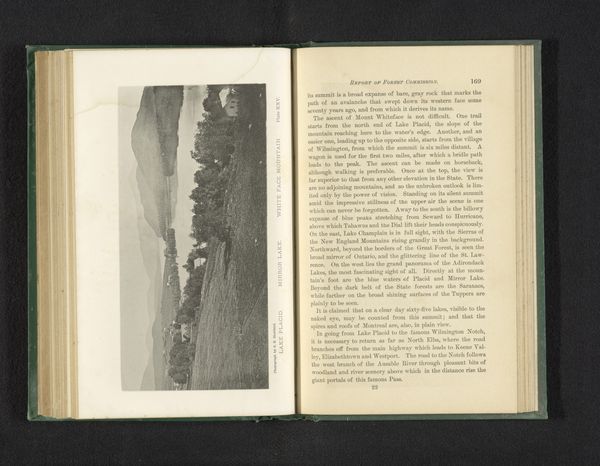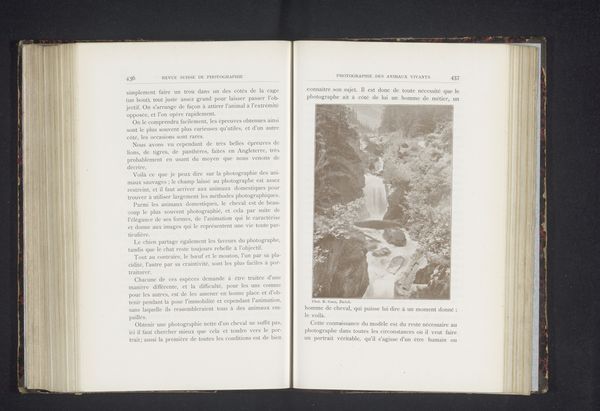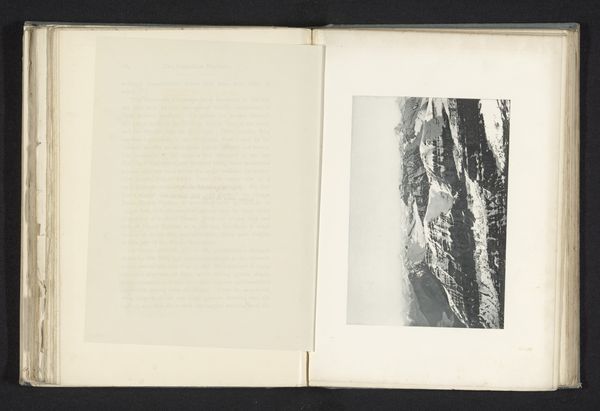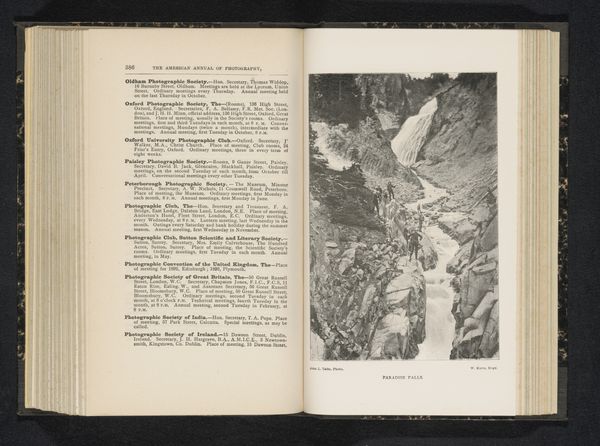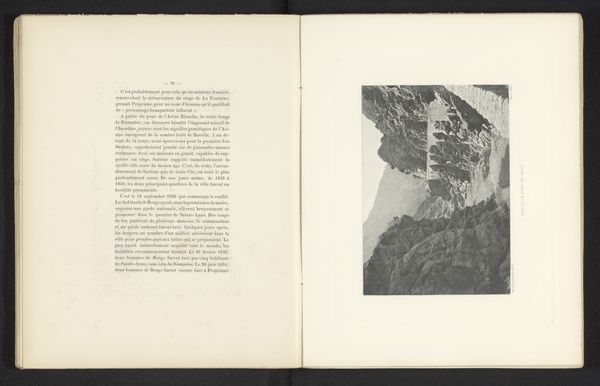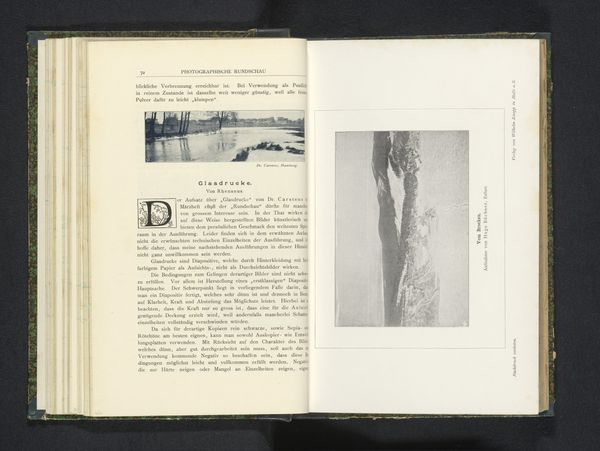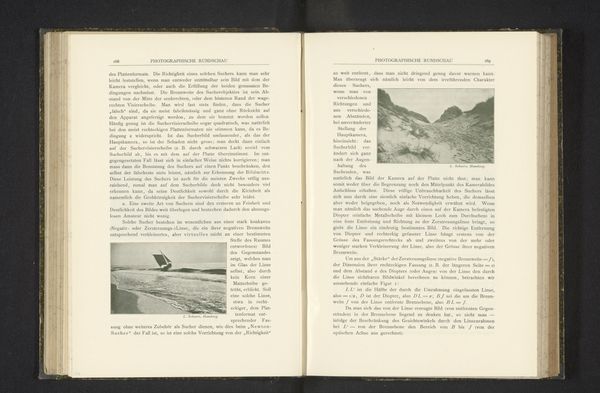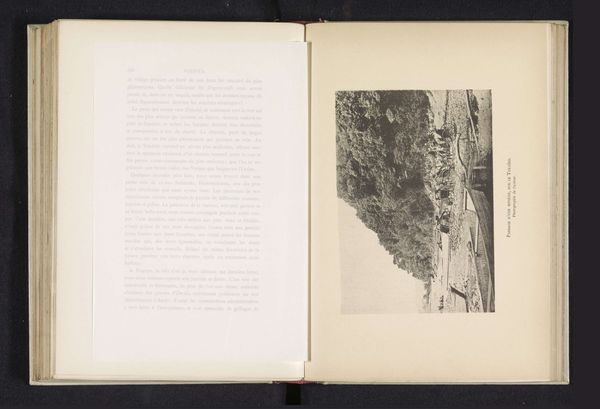
Keizer Wilhelm II van Duitsland aan de voet van de Suphell-gletsjer te Noorwegen before 1892
0:00
0:00
print, photography
#
aged paper
#
homemade paper
# print
#
landscape
#
photography
#
personal sketchbook
#
hand-drawn typeface
#
journal
#
thick font
#
golden font
#
prehistoric
#
realism
#
historical font
#
columned text
#
small font
Dimensions: height 106 mm, width 146 mm
Copyright: Rijks Museum: Open Domain
Curator: Before us, we have a print of an image titled "Keizer Wilhelm II van Duitsland aan de voet van de Suphell-gletsjer te Noorwegen," which roughly translates to "Kaiser Wilhelm II of Germany at the foot of the Suphell Glacier in Norway," taken some time before 1892 by Paul Güssfeldt. It's fascinating to see this image presented within what looks like the pages of a book or journal. Editor: Oh, immediately I get this sense of dramatic stillness, you know? That imposing glacier kind of dwarfs everything, especially poor old Kaiser Wilhelm down there in the foreground. It's like, nature asserting itself against even the grandest of egos. Curator: Absolutely, and considering Güssfeldt's background as a geographer and mountaineer, the materiality and context are key here. It suggests a blend of scientific documentation and imperial portraiture, with that glacial landscape operating almost like a stage for the Kaiser's display of power—or, perhaps, its relative insignificance. Note the hand-drawn typefaces adjacent in the journal entry; this indicates an elaborate pre-offset printing method using sketches and possibly a homemade paper. Editor: That journal format really enhances that historical, almost narrative, feel. You get the impression of flipping through someone's personal record of exploration and encounter. There’s a real artistry in how it captures this particular moment, not just as a snapshot but as a considered composition. It also feels slightly melancholic, right? The starkness, the solitary figure... Curator: And the medium itself—photography reproduced as a print—speaks to the methods of dissemination of knowledge and imperial power at the time. Photography’s supposed objectivity lent authority to both scientific observation and the image of the ruling elite. What was consumed, how it was consumed...it's all part of that machinery. Editor: Yes, the act of creating and distributing images! It's really easy to get lost in those details. Curator: It does make you consider how such images participated in shaping perceptions of both the landscape and the Kaiser's persona, perpetuating certain narratives about man and nature, leadership, and even exploration. Editor: Ultimately, it's just powerful how this seemingly simple image, preserved in this specific way, manages to contain so much about its era. Curator: Precisely, it's a rich artifact speaking to a moment of intersection between exploration, empire, and image-making, leaving one wondering what other material contexts are awaiting investigation.
Comments
No comments
Be the first to comment and join the conversation on the ultimate creative platform.
